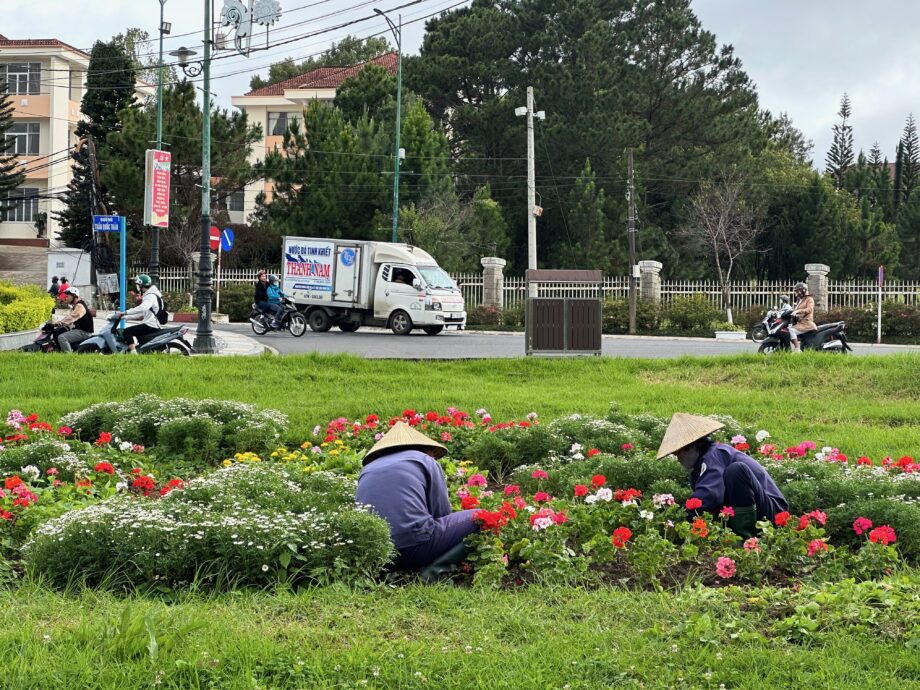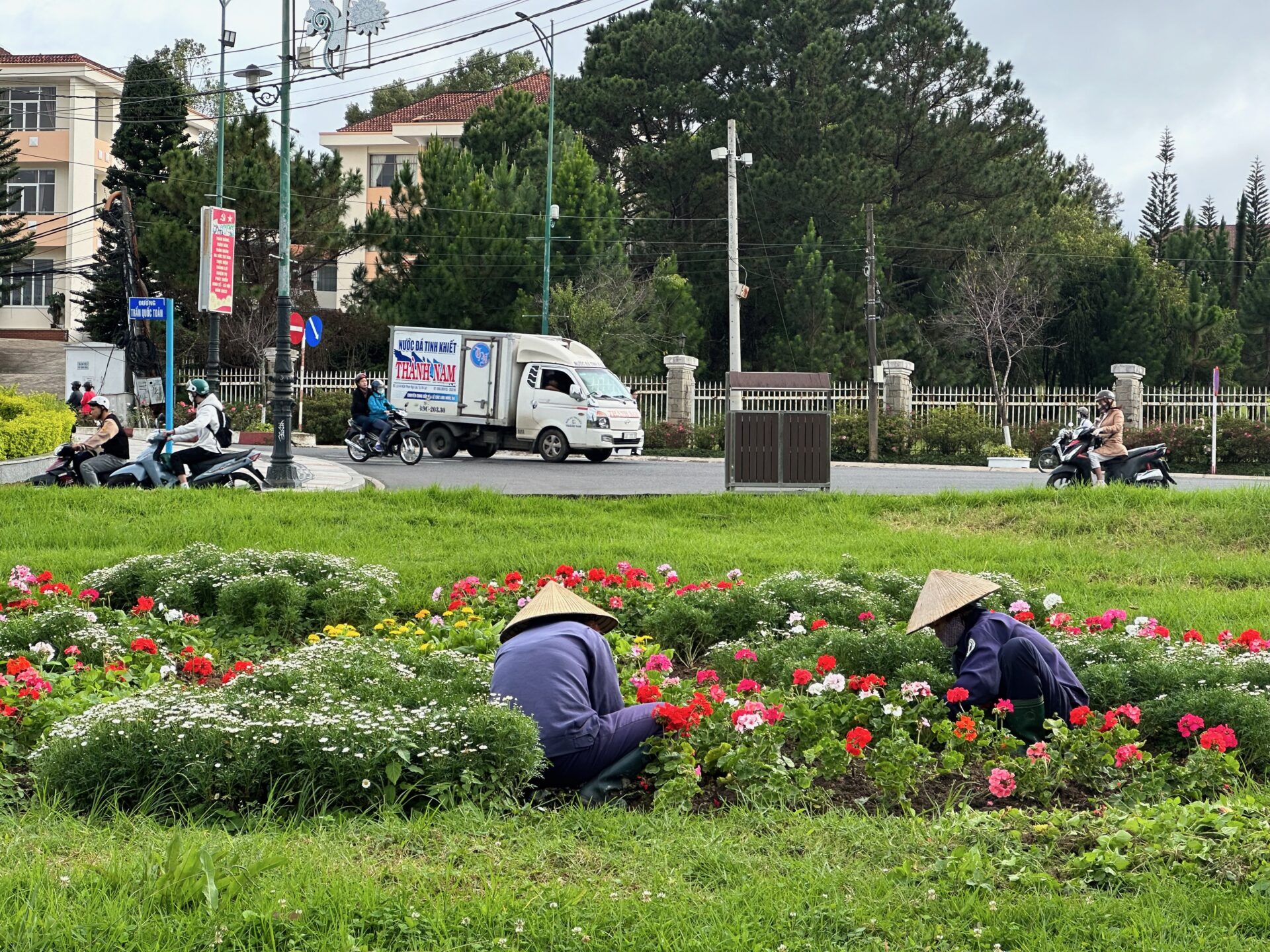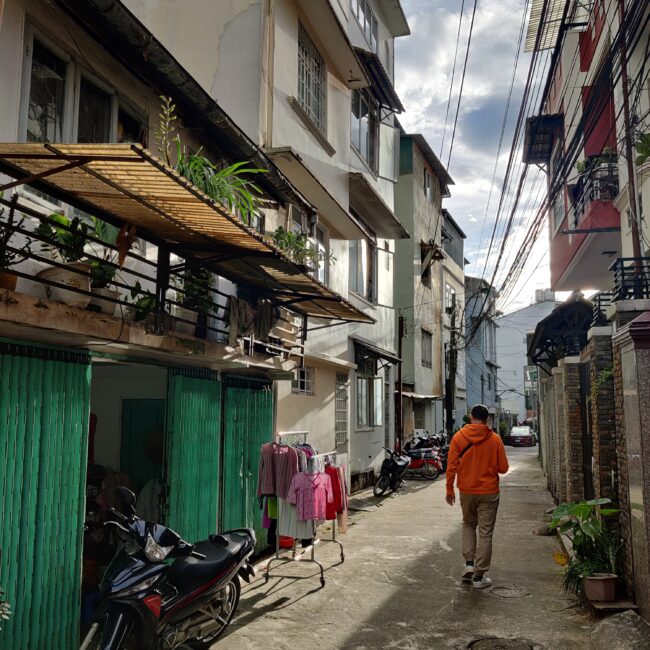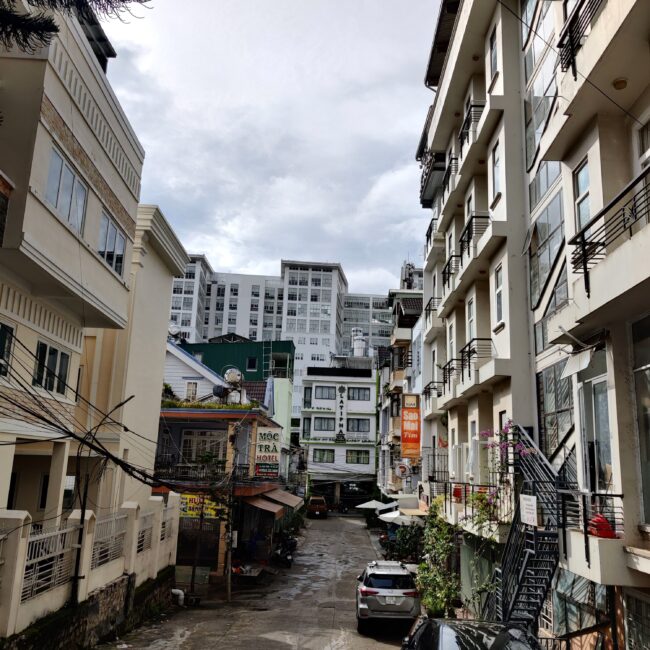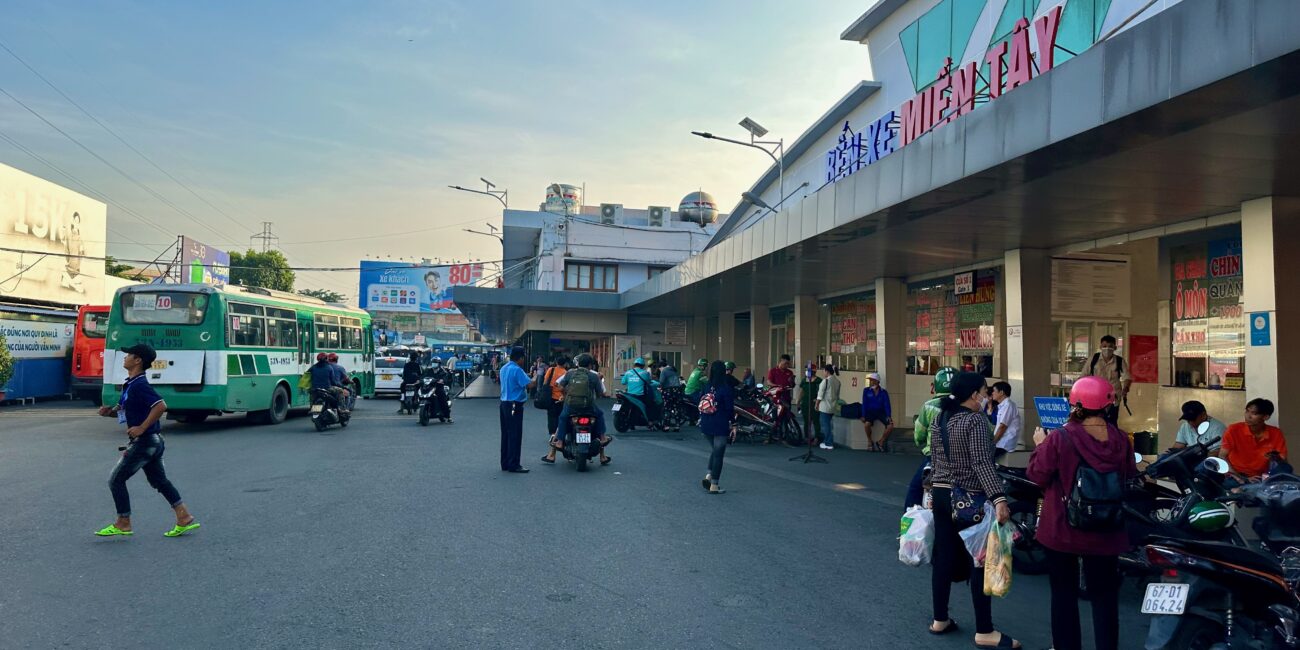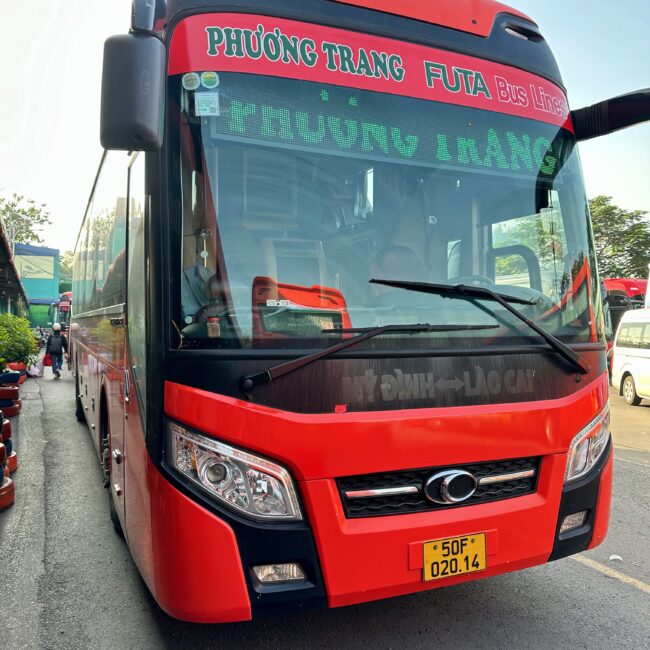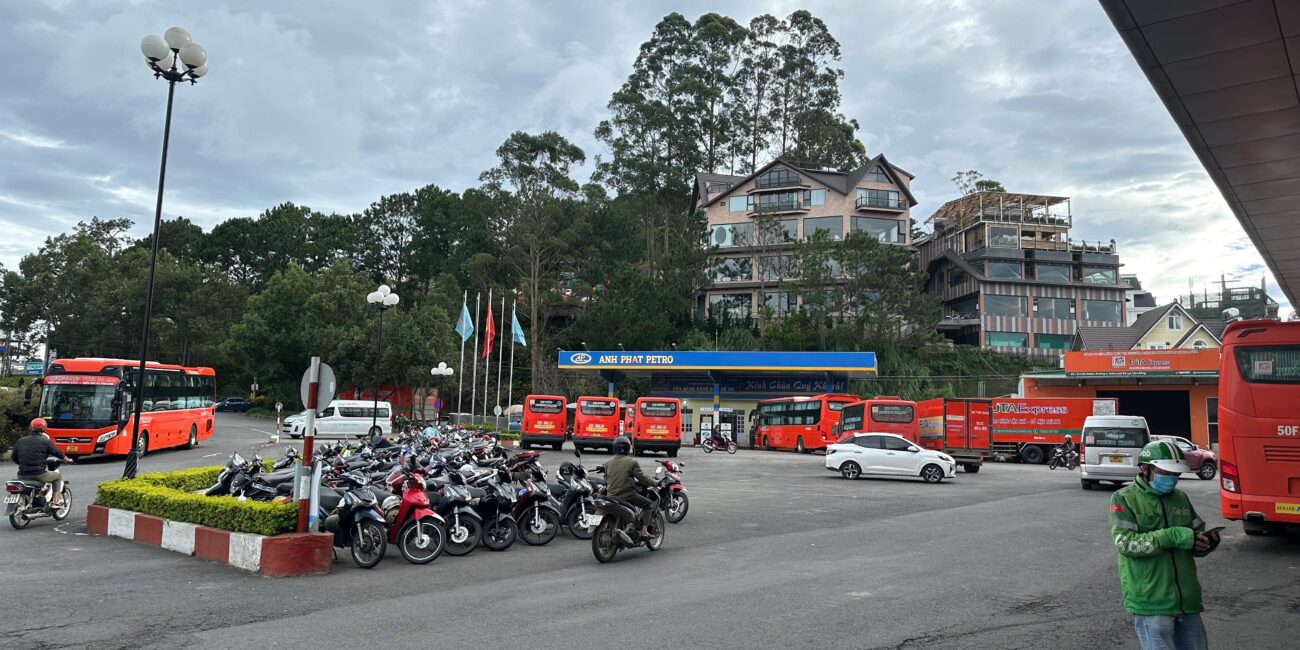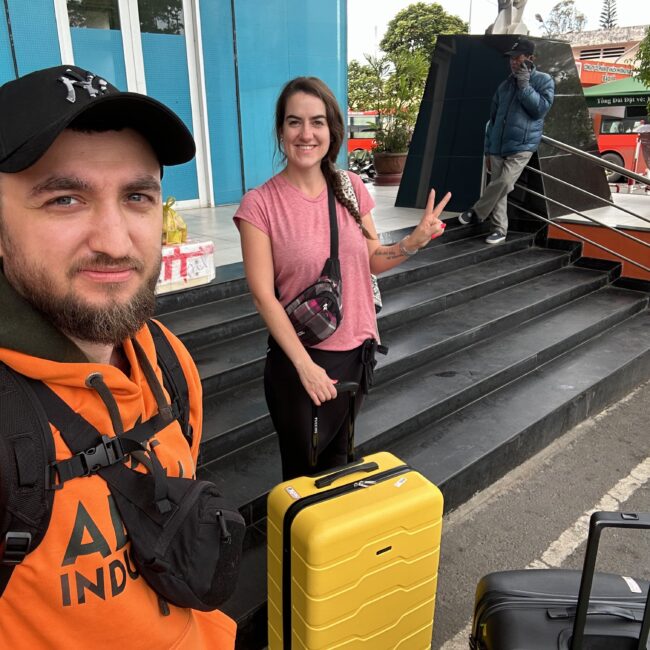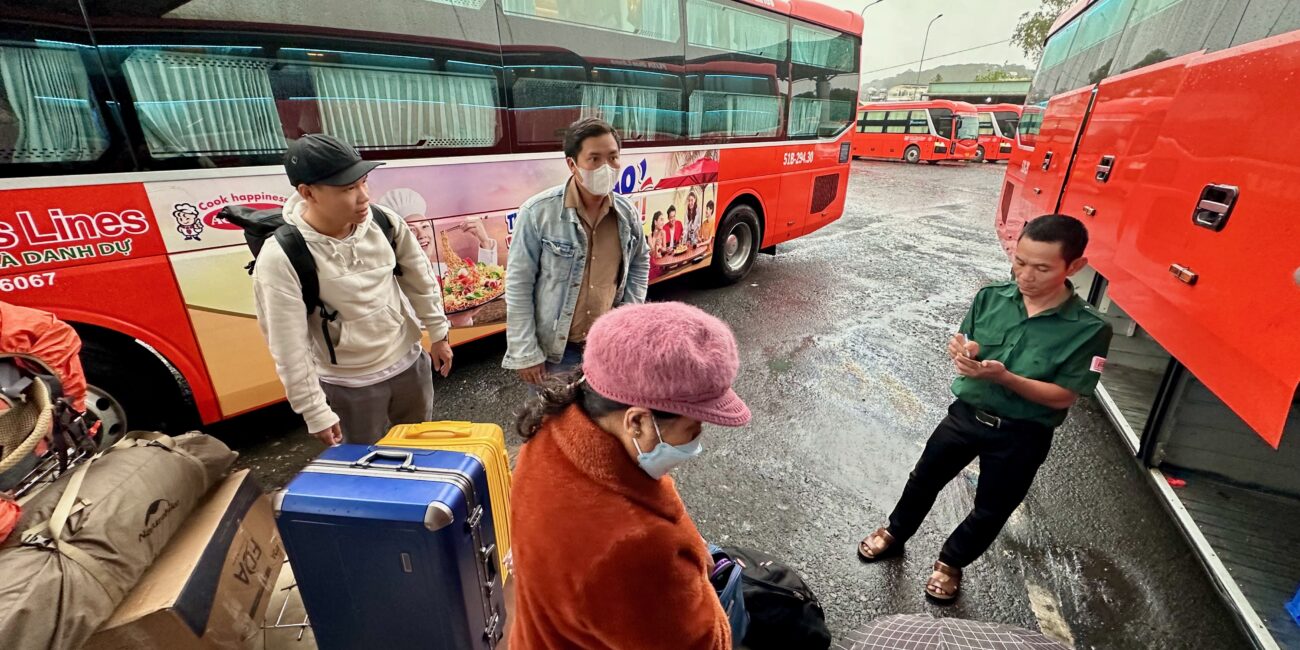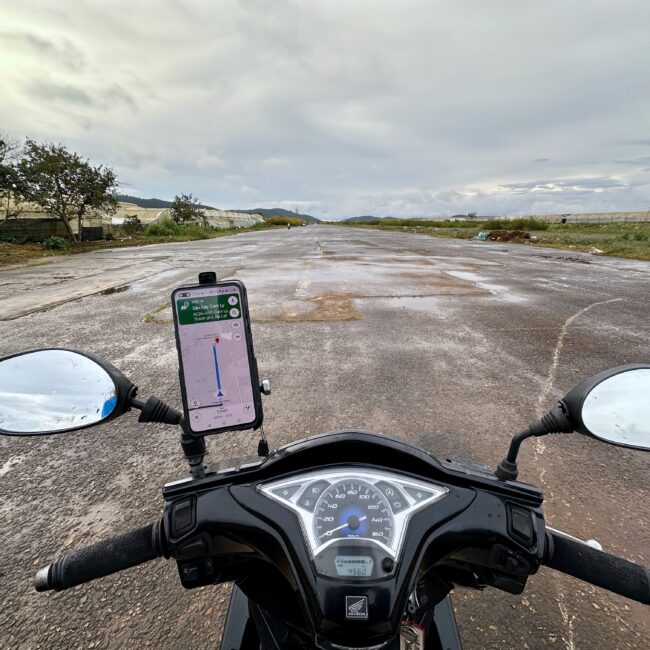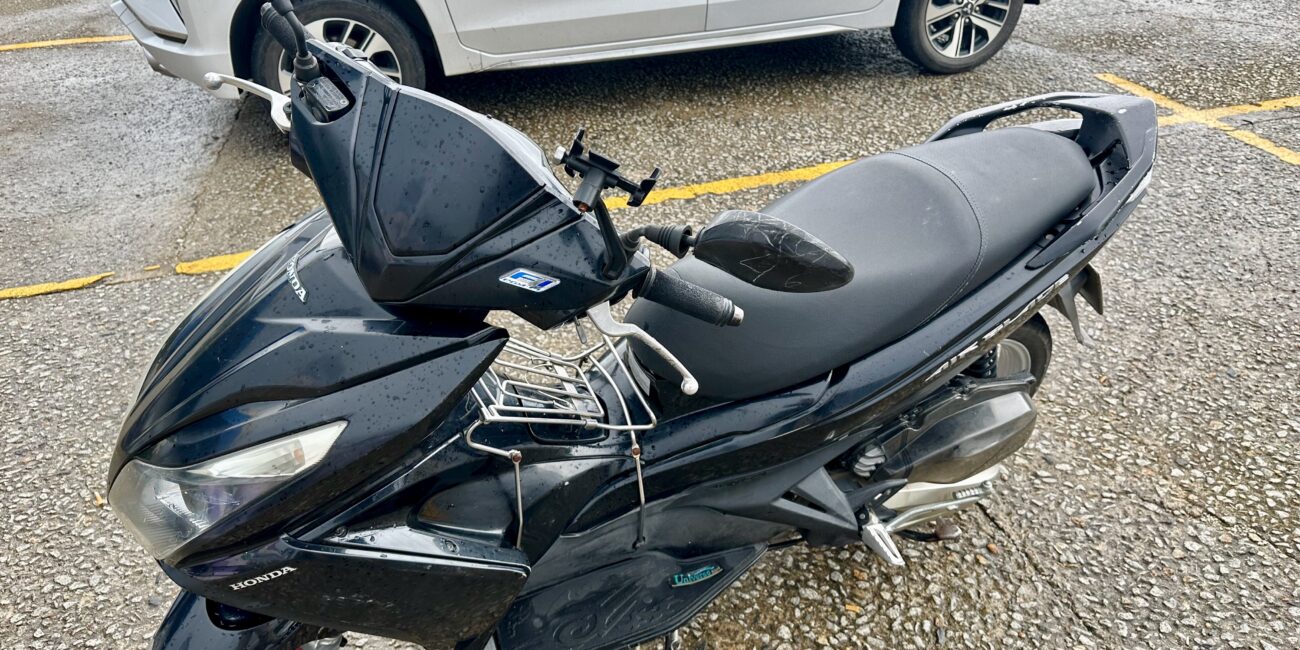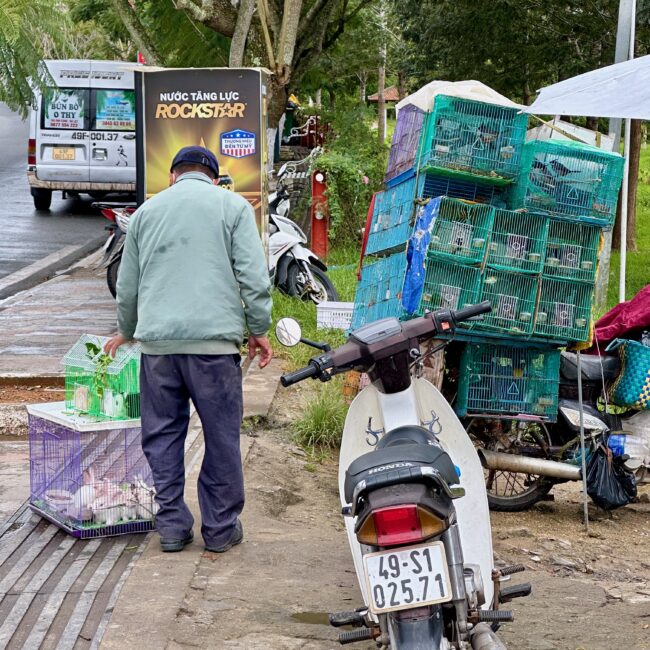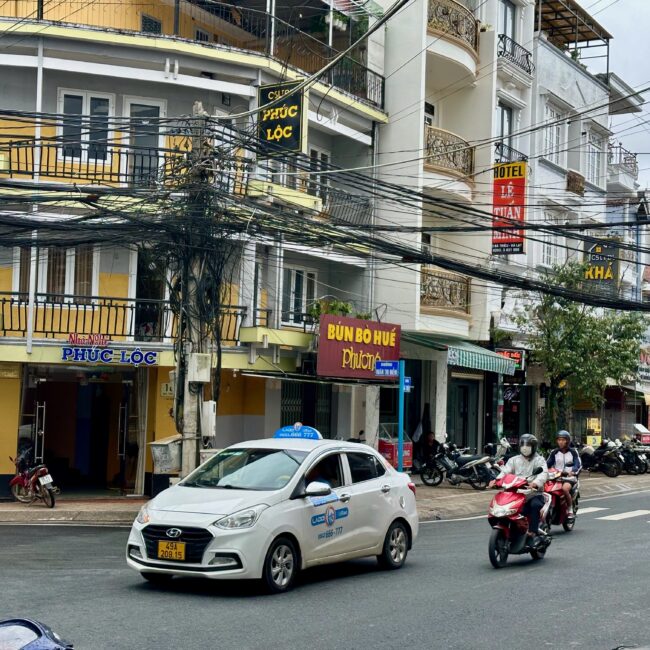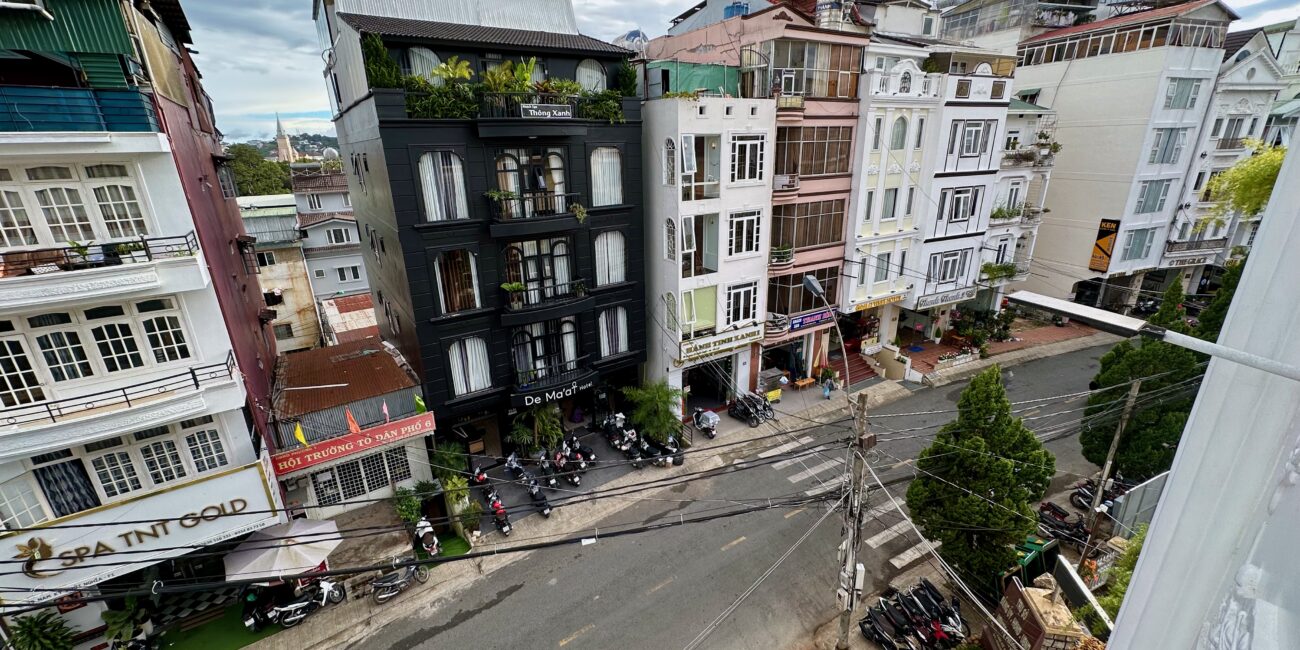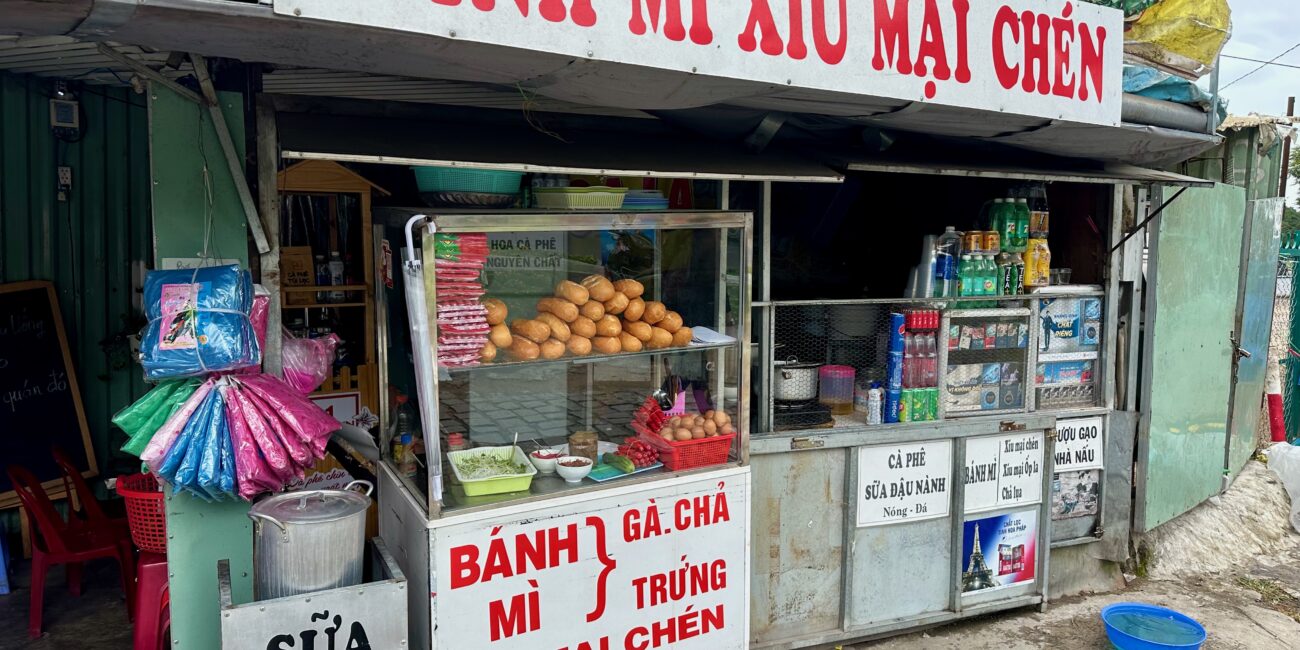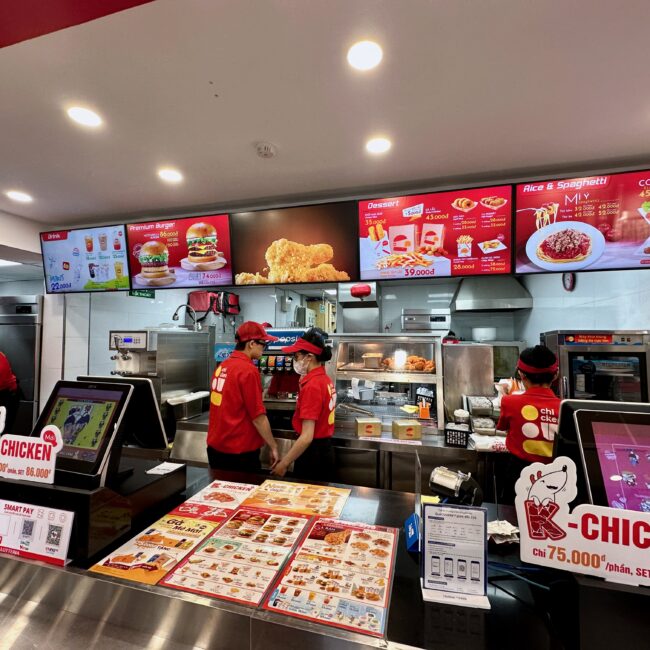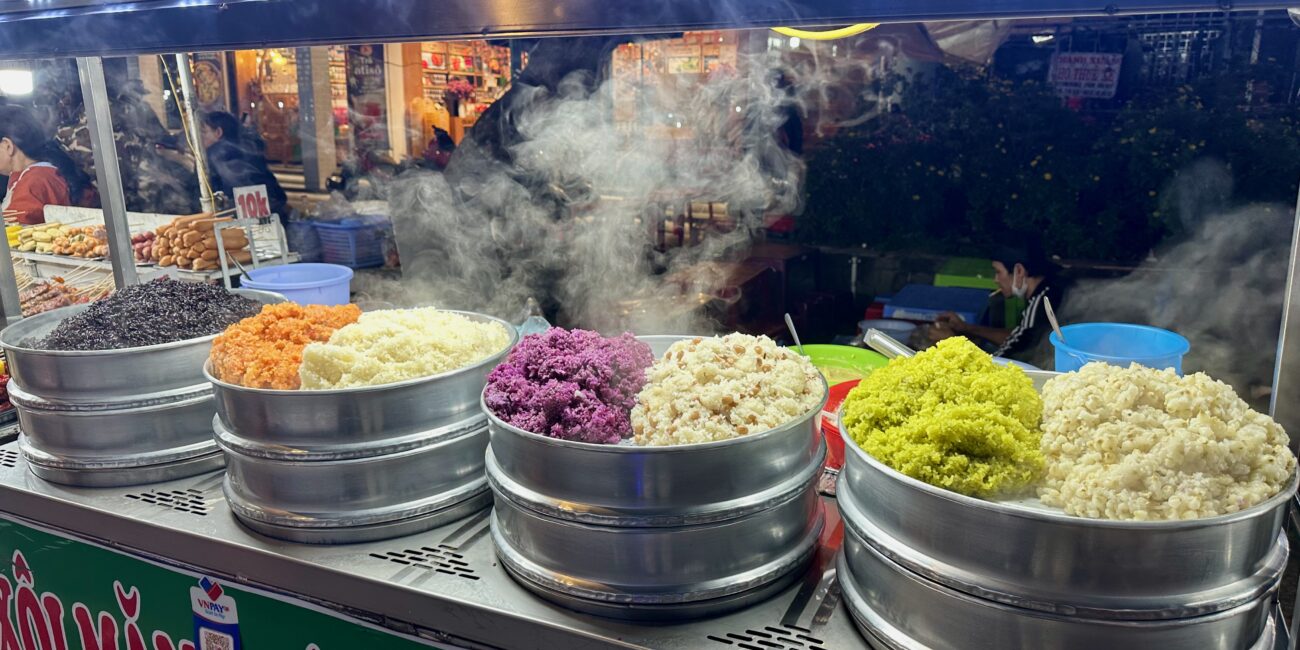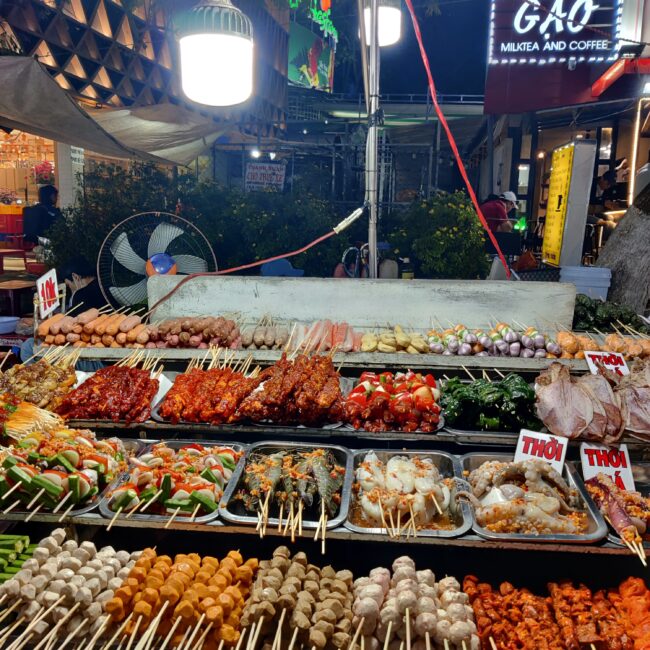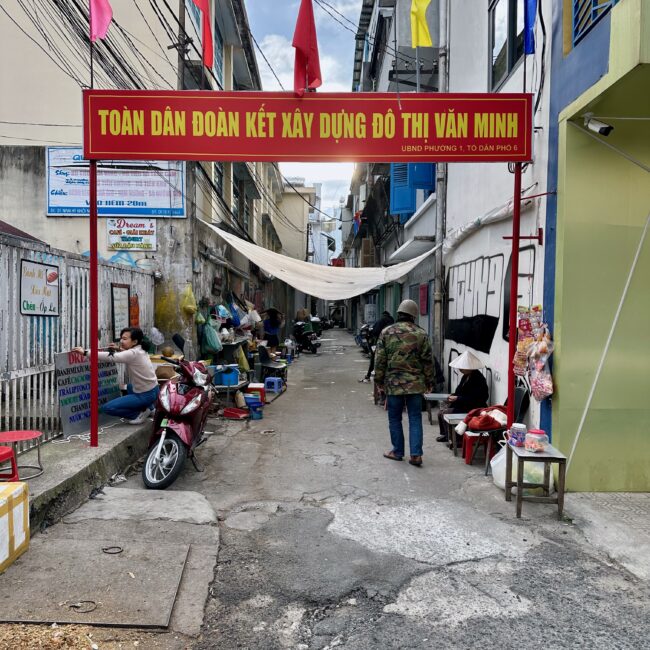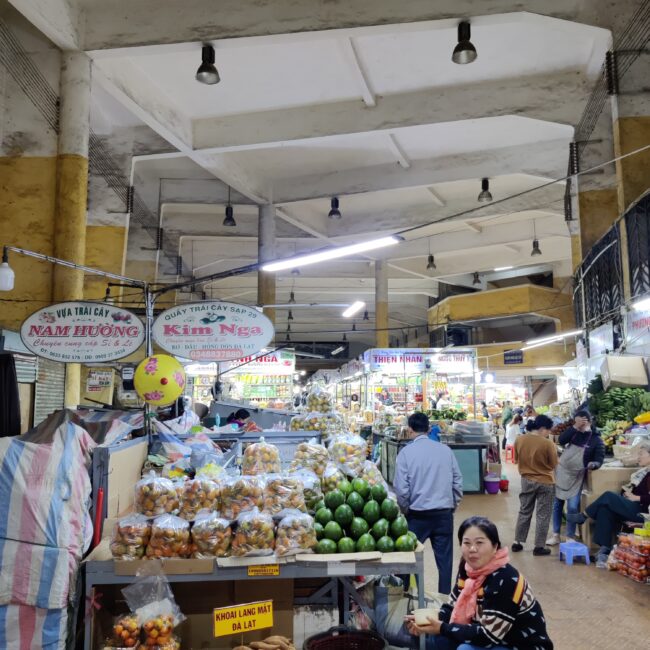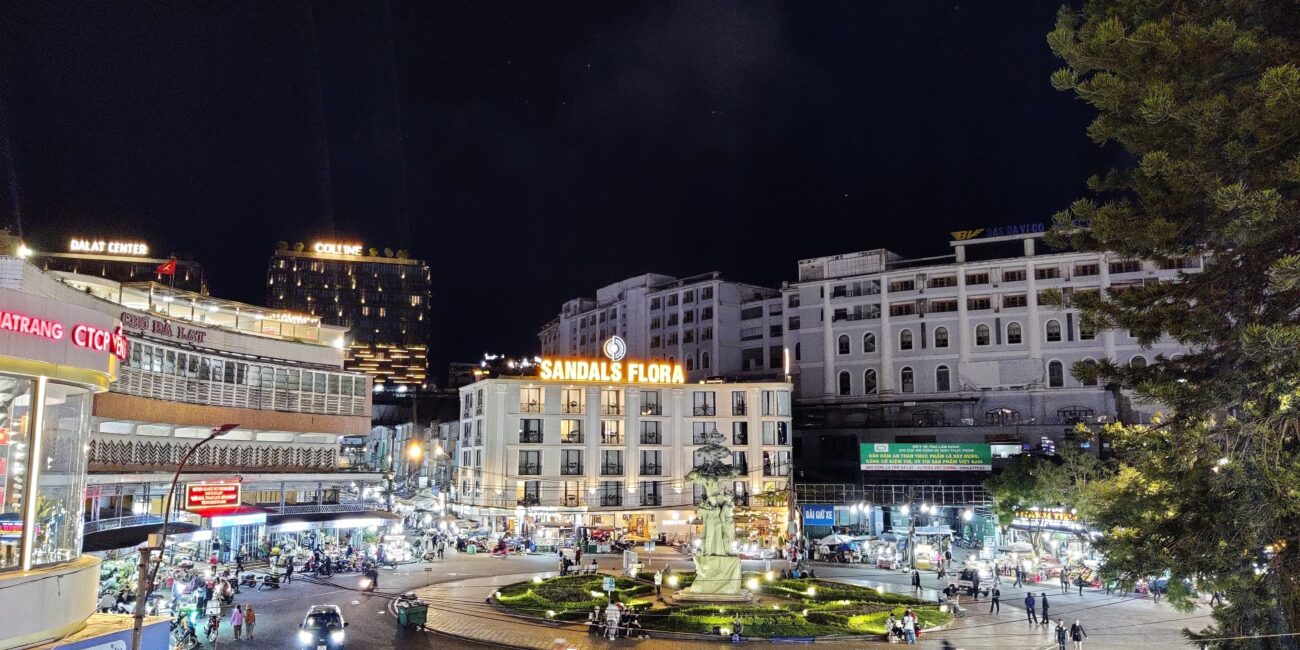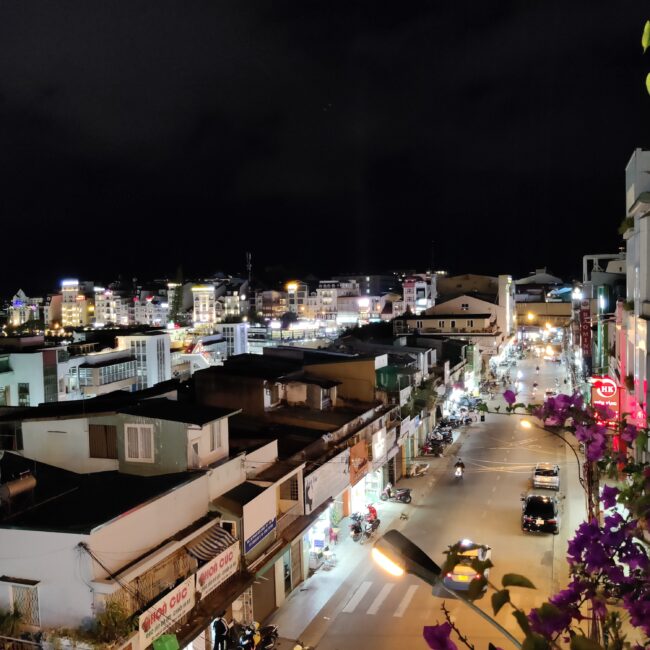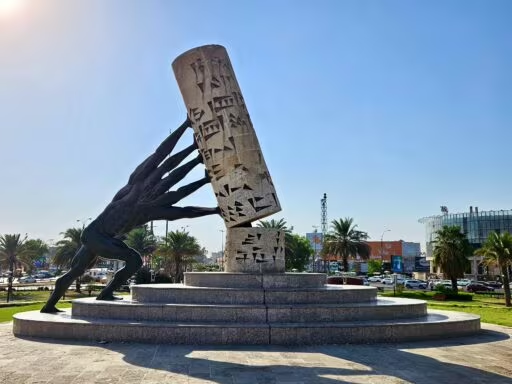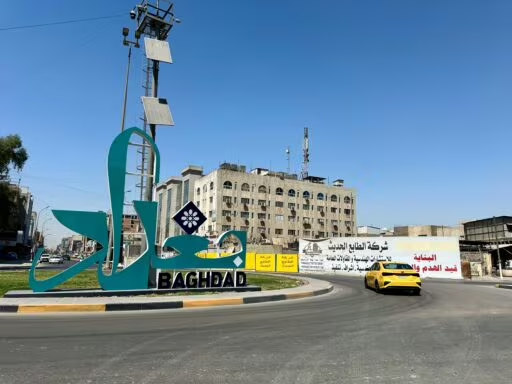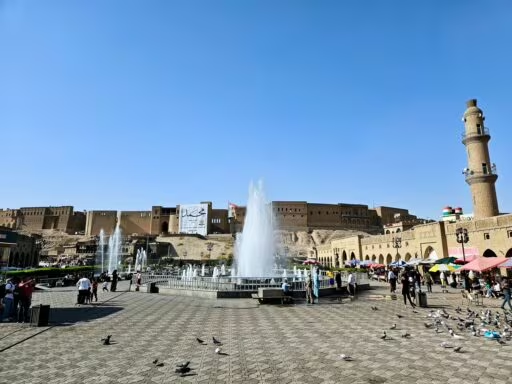This post is also available in:
Polski
Hello! 👋
This is the second part of our travel story from Vietnam, which we visited in November 2023. This time, we arrived in Da Lat – a place famous for its mild climate and stunning landscapes.
After a few intense days in Ho Chi Minh City, it was time to slow down and enjoy a slightly cooler climate. Da Lat immediately impressed us with its tranquility, greenery, and unique charm, earning it the nickname “City of Eternal Spring”.
If you haven’t yet read the first part of our Ho Chi Minh City report, 👉 click here and catch up!
Where is Da Lat located?
Đà Lạt is a city located in southern Vietnam, in the Lâm Đồng Province. Situated at an altitude of approximately 1,500 meters above sea level on the Langbian Plateau, it boasts a mild climate that sets it apart from the tropical conditions found in the rest of the country.
The city was established during the colonial era by the French, who were seeking a cooler retreat from the tropical heat. As a result, Da Lat’s architecture reflects European influences, giving it a unique and distinctive character.
Da Lat is renowned for its picturesque landscapes, including lakes, waterfalls, and pine forests, making it a popular destination for nature lovers and those seeking a break from the hustle and bustle of big cities.
Departing from Ho Chi Minh to Da Lat
Since we didn’t rent a car, we had to find another way to leave Ho Chi Minh City and get to Da Lat. Fortunately, Vietnam has a fairly well-developed bus network, making it a convenient option for travelers.
🚉 Bus station
While traveling through Vietnam, we opted for a sleeper bus from Ho Chi Minh City to Da Lat. Without a rented car, this turned out to be the most practical way for us to leave the city and continue our journey.
We chose the 7:30 AM departure operated by Phương Trang (Futa Bus Lines). We purchased our tickets online through the company’s official website, avoiding third-party agents. The total cost for two people was 560,000 VND.
The bus station we departed from – BX Miền Tây – left a rather average impression on us. If we were to compare it to something familiar, it felt like Polish bus stations from the 90s – outdated, a bit dirty, and lacking modern amenities or conveniences.
🚌 Riding in a sleeper bus
Buying a ticket online was just the first step. Once we arrived at the bus station in Ho Chi Minh City, we still had to “check-in” at the ticket counter. The process was quick and straightforward, and the staff member who assisted us spoke English – which isn’t always a given in Vietnam.
Sleeper buses in Vietnam are a popular mode of transport for long-distance travel. They are equipped with three rows of bunk-style reclining seats, allowing passengers to rest comfortably during the journey. Our trip took approximately eight hours, with one stop along the way. These stops, similar to European motorway rest areas, offer very basic “amenities”, although their standard is often quite average.
🚏 We have arrived at Da Lat
We arrived at the Đà Lạt bus station (Bến xe Liên tỉnh Đà Lạt) without any issues. The bus was right on schedule, which isn’t always guaranteed in Vietnam, so we were pleasantly surprised.
The moment we stepped off the bus, it was clear that Đà Lạt had a completely different vibe compared to Ho Chi Minh City – cooler air and noticeably more mountainous terrain.
Since we had suitcases with us, we quickly ordered a Grab to reach our hotel without too much hassle. Đà Lạt is quite hilly, so walking with luggage wasn’t really an option.
It’s worth noting that the bus station is full of people offering transport services – from taxis to private scooters. While some offers might seem tempting, we strongly recommend sticking with the Grab app. It’s convenient, safe, and helps avoid unexpected price surprises.
Ordering a ride through the app took us just a moment, giving us a chance to look around the area. The bus station in Đà Lạt was relatively clean but had a bit of that chaotic vibe typical of many Asian cities.
How to get to Da Lat?
🚗 By car or 🏍️ By motorcycle
The journey from Ho Chi Minh City to Đà Lạt covers roughly 300 kilometers, which theoretically should take around 6–8 hours by car. In reality, though, the travel time can vary depending on road conditions and the number of stops along the way.
Most of the route follows National Highway QL20, which starts off as a wide and well-maintained road. However, as you approach the mountains, it becomes narrower and more winding. The final stretch through the mountainous region is a real test for drivers—serpentines, sharp turns, and steep climbs require full concentration and careful maneuvering.
If you’re planning to travel by motorbike, it’s definitely an adventure with stunning views along the way—pine forests and mountain landscapes are truly impressive. However, keep in mind that the roads can become slippery in the rain, and fatigue after a full day of riding might start to take its toll.
For those traveling by car or motorbike, there are rest stops along the way that resemble European motorway service areas. However, don’t expect luxury—these stops typically offer simple eateries with local food and very basic toilet facilities.
🚆 By train
There is no direct train connection from Ho Chi Minh City to Đà Lạt. The nearest railway station is located in Nha Trang, approximately 140 kilometers away. From there, you can continue your journey to Đà Lạt by bus or car.
Đà Lạt is home to the historic Đà Lạt Railway Station (Ga Đà Lạt). Despite its charm and unique architecture, the station no longer serves as a hub for intercity train connections. Today, it operates primarily as a tourist attraction, offering short scenic rides to nearby destinations.
🚌 By bus
In addition to Phương Trang (Futa Bus), which operates regular routes to Đà Lạt, there are other options like Techbus VN JSC and Thanh Buoi. These companies offer both seated and sleeper buses, providing flexibility depending on your comfort preferences and budget.
Tickets can be easily booked online through platforms like 12Go Asia, which allows you to compare prices and departure times from different operators. This is especially useful for tourists who prefer to plan ahead and avoid last-minute surprises.
Ticket prices typically start at around 250,000–300,000 VND per person. The journey takes approximately 7 to 9 hours, depending on the operator and road conditions. It’s a good idea to book tickets in advance, especially during the high tourist season, as the route to Đà Lạt is very popular.
✈️ By Airplane
The nearest airport is Liên Khương Airport (DLI), located about 30 kilometers south of the city center. It operates domestic flights from major Vietnamese cities such as Ho Chi Minh City, Hanoi, and Da Nang.
Flights to Đà Lạt are offered by Vietnam Airlines, VietJet Air, and Bamboo Airways, with a flight time of approximately 50 minutes from Ho Chi Minh City.
Upon arrival from the airport, you can get to the city by cab or use the Grab app, which takes about 40 minutes.
Traffic conditions
When traveling to Da Lat, it’s important to be prepared for changing road conditions. Most of the roads leading to the city are paved, but as you get closer to the mountains, they become increasingly winding and steep. Mountain stretches, in particular, can be challenging for less experienced drivers, especially during rain, when the surface can get slippery.
🛵 Renting a scooter
In Đà Lạt, we decided to rent a scooter, which turned out to be a great way to get around the city and explore the surrounding areas. The rental shop was conveniently located near our hotel and had fairly positive reviews online.
The rental process went smoothly, although the owner initially requested that we leave an ID document as a deposit. We firmly refused and instead left a cash deposit – something we highly recommend! Never leave your passport or ID card, even if the owner insists it’s a standard practice.
The scooter was in good condition – this time, we didn’t encounter any issues, unlike our experience in Ho Chi Minh City. The engine ran smoothly, and the lights, brakes, and horn all worked perfectly. Thanks to that, we were able to explore the nearby attractions without any problems.
However, it is worth remembering the formalities. In Vietnam, an international driver’s license in accordance with the Vienna Convention of 1968, with a category A, is required to drive a scooter. Without this document, insurance will not work in the event of an accident, and even worse – in the event of a collision, it is the driver without the proper credentials who will automatically be found guilty. We write about how to prepare for renting a scooter in detail in a separate article.
🚦 Traffic reality
Driving in Đà Lạt is quite different from the experience in larger Vietnamese cities. While traffic is less intense, scooters still dominate the roads. The city is characterized by narrow, winding streets and steep inclines, which demand extra caution from drivers. Interestingly, Đà Lạt has no traffic lights; instead, intersections rely on signs and roundabouts to manage the flow of vehicles.
During our journey, we encountered varying weather conditions, including rain, which made navigating the slippery roads even more challenging. In such situations, it’s important to remember that the quality of tires on rented scooters can vary. So, don’t blindly trust the rental provider’s assurances about the vehicle’s condition.
We definitely recommend that only experienced riders consider navigating Đà Lạt on a motorbike, especially given the challenging terrain and unpredictable weather conditions. It’s not uncommon to see local motorcyclists riding against traffic or even using sidewalks to get around.
One interesting detail that caught our attention while driving around Đà Lạt was a traffic sign indicating no parking on even-numbered days. It’s quite an unusual rule, and to be honest, we don’t recall ever seeing such a sign before—although, as it turns out, this regulation also exists in Polish traffic laws!
Public transport
🚍 Public transportation
There is no typical public transportation system in Da Lat, like the regular bus lines found in larger cities. Instead, public transport here mainly relies on private operators offering longer intercity routes rather than local commuting options.
Instead of traditional city buses, locals in Đà Lạt often rely on scooters and motorbikes, which are the primary mode of transportation in the area.
🚖 Passenger transportation
Grab operates in the city, making it a convenient and affordable way to get around the area. The app allows you to quickly book rides, which is especially useful if renting your own vehicle isn’t an option.
We recommend avoiding transportation offered by random individuals outside of ride-hailing apps – although it’s common for local drivers to approach tourists with offers. This type of service can be more expensive, less safe, and harder to hold accountable in case of any issues.
Accommodation
During our stay in Da Lat, we booked a room at Hotel Roy Dala through Booking.com.
The room was quite spacious and comfortable, and the price—considering the standards of this city—was very reasonable. The hotel’s location turned out to be a big advantage as well, being close to the city center. This made it easy for us to explore, grab a bite at nearby restaurants, and quickly access local attractions.
When it comes to breakfast, we have to give it a big thumbs down. It was very average and, at times, downright disappointing. The buffet was minimal, and the selection was quite limited – there were even times when we received something completely different from what we had ordered. The experience was further amplified by the fact that there were only a handful of guests in the hotel, making the whole place feel somewhat deserted.
Food
We had a bit of a hard time finding meals that suited our tastes. Many dishes didn’t quite hit the mark, and some culinary experiences turned out to be downright disappointing. For instance, we ordered a bowl of phở with chicken, which ended up being rather unappetizing – the meat was full of tiny bones and bits, making it difficult to eat.
Local food in Đà Lạt heavily relies on fresh vegetables and herbs, reflecting the region’s agricultural roots. However, the way meat is served often differs from what we’re used to. Chicken, for example, is typically served with bones, cartilage, and skin intact – eating it requires some patience, and for some, it might even be off-putting.
After a few unsuccessful attempts to enjoy the local dishes, we decided to visit Lotteria – an Asian fast-food chain, hoping for something similar to KFC. Unfortunately, the meat turned out to be completely inedible for us – both the texture and taste left much to be desired. We gave fast food another try, this time at KFC. It was slightly better, although it still didn’t match European standards. Interestingly, there’s no McDonald’s in Đà Lạt, so if you’re counting on a reliable Big Mac – you might be disappointed.
Local cuisine
As for the typical dishes served in the region, the city is famous for several specialties:
- Bánh mì xíu mại – a baguette served with pork meatballs and a flavorful broth. It’s especially popular as a breakfast dish.
- Bánh căn – small rice pancakes topped with egg, shrimp, or pork, served with fish sauce and pickled vegetables.
- Lẩu gà lá é – a hot pot dish with chicken and Thai basil leaves, often enjoyed during cooler evenings.
- Nem nướng – grilled pork sausages wrapped in rice paper with fresh vegetables and herbs.
Exchange office or ATM?
In Đà Lạt, card payments are still not widely accepted, so having cash on hand is essential. Instead of searching for currency exchange offices, we opted to withdraw money from ATMs, which proved to be a convenient solution.
It’s worth noting that not all ATMs in Vietnam are free of charge. Some banks may impose fees for cash withdrawals, especially when using foreign cards. Therefore, it’s recommended to use ATMs operated by reputable banks, such as TPBank or VPBank.
It’s always a good idea to carry more than one payment card, just in case – technical issues, card blocks, or even losing a card can happen, and having access to cash is essential.
Climate and weather conditions
This is one of the things that truly sets this place apart from the rest of Vietnam. Located at an altitude of around 1,500 meters above sea level, the city enjoys a pleasantly cool, mountainous climate—a welcome relief after the heat often experienced in the southern parts of the country.
summer, temperatures rarely exceed 24–25°C, while in winter, they can drop to as low as 10–12°C at night—although it remains warm during the day. This is why Da Lat is often referred to as the “City of Eternal Spring”.
Despite the pleasant climate, it’s worth keeping in mind that mountain weather can be unpredictable. We experienced a mix of sunshine and light rain during our stay. The rainy season, which typically lasts from May to October, brings more frequent downpours—sometimes short but intense. On the other hand, the dry season, from November to April, is the best time to visit.
It’s worth bringing something warmer to wear, as evenings can get surprisingly chilly – especially if you’re riding a scooter.
Safety
When it comes to safety, Da Lat feels much calmer compared to larger Vietnamese cities like Ho Chi Minh City or Hanoi. Life here moves at a slower pace, and while tourists are present, they don’t overwhelm the area.
That doesn’t mean you can let your guard down completely. Pickpocketing, although less common than in larger cities, can still occur—especially in crowded tourist areas like night markets or popular viewpoints. We personally felt that the locals here were friendlier and less pushy, but we still kept our backpacks in front of us and made sure to keep an eye on our belongings at all times.
Despite the mountainous terrain, traffic here is noticeably calmer compared to the busy streets of Vietnam’s larger cities. Drivers tend to be more patient, but the sharp turns and narrow roads demand extra caution—especially if you’re riding a scooter. Rain, fog, and slippery surfaces can further complicate the journey, so it’s essential to stay alert and prepared.
Places we were able to see
Da Lat and its surroundings have plenty to offer. Our sightseeing focused mainly on places we could easily reach by scooter. It’s definitely the most convenient mode of transportation in this area.
On the other hand, if you don’t have the proper license to operate a scooter, we strongly advise against taking the risk. In such cases, Grab is an excellent alternative, although frequent rides can quickly add up in terms of costs.
In a separate article, we’ve covered in detail what’s worth seeing around Đà Lạt. 👉 Click here to learn more about our impressions and the specific places we visited!
We pack our bags and continue on our way
After spending a few days here, it was time to hit the road again. While the landscapes were stunning and the mountain climate refreshing, the local cuisine didn’t exactly win us over. The views? Absolutely fantastic. The food? Well, let’s just say it wasn’t quite to our taste.
Next Stop – Đà Nẵng. We considered several transportation options – from flights to renting a car – but ultimately decided to take a sleeper bus. Just like before, we chose FUTA Bus Lines and opted for a higher-standard sleeper bus.
We had 20 hours of travel ahead of us – quite a challenge, but also an adventure we were prepared for. Price-wise, this option was the most budget-friendly, and the comfort of traveling in such a sleeper bus was more than enough to survive a long journey like this.
We will tell you about how our trip to Đà Nẵng went, what we saw along the way and our impressions of the place in our next article. 👉 Click here and check out the rest of our adventure! 🚍

